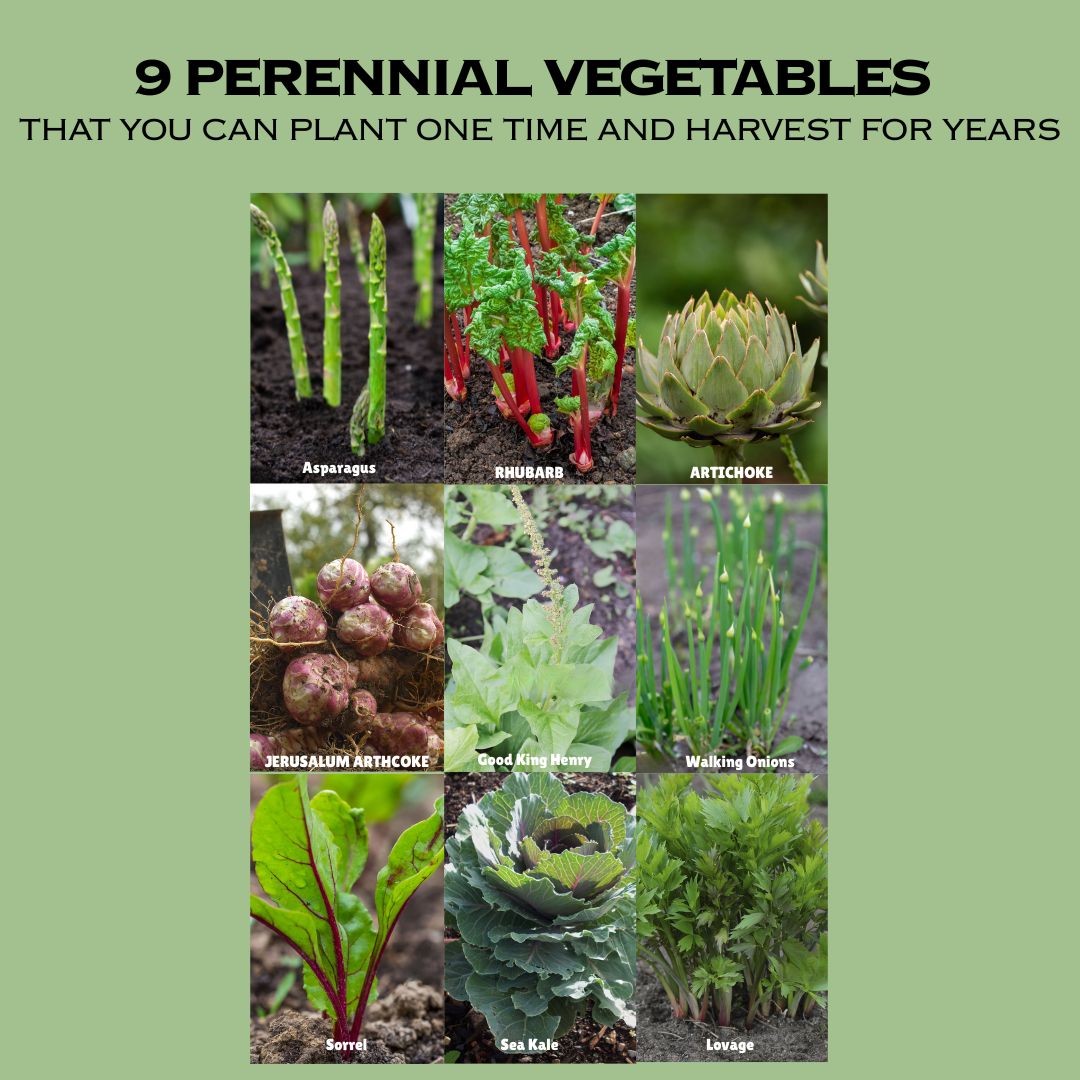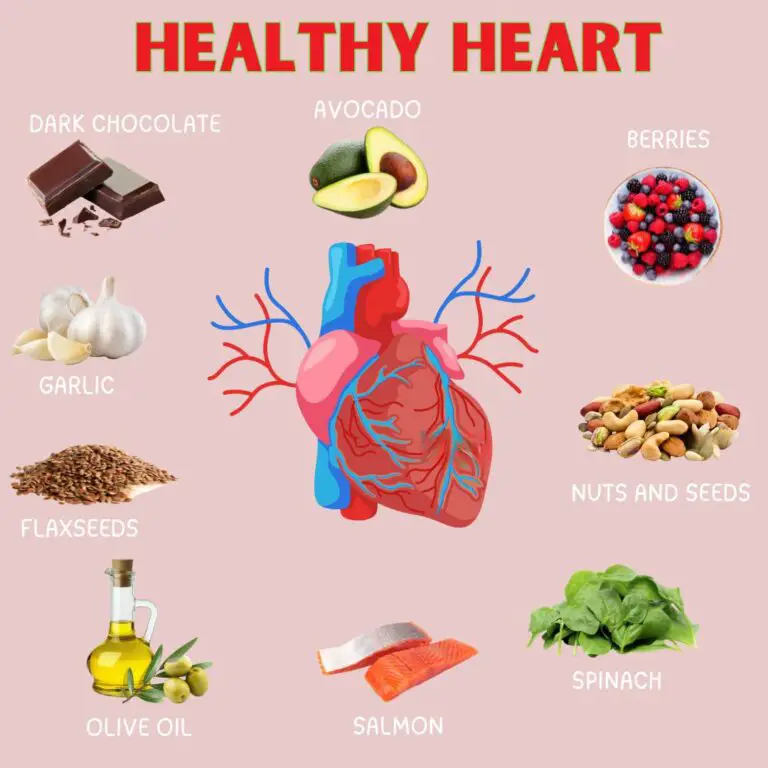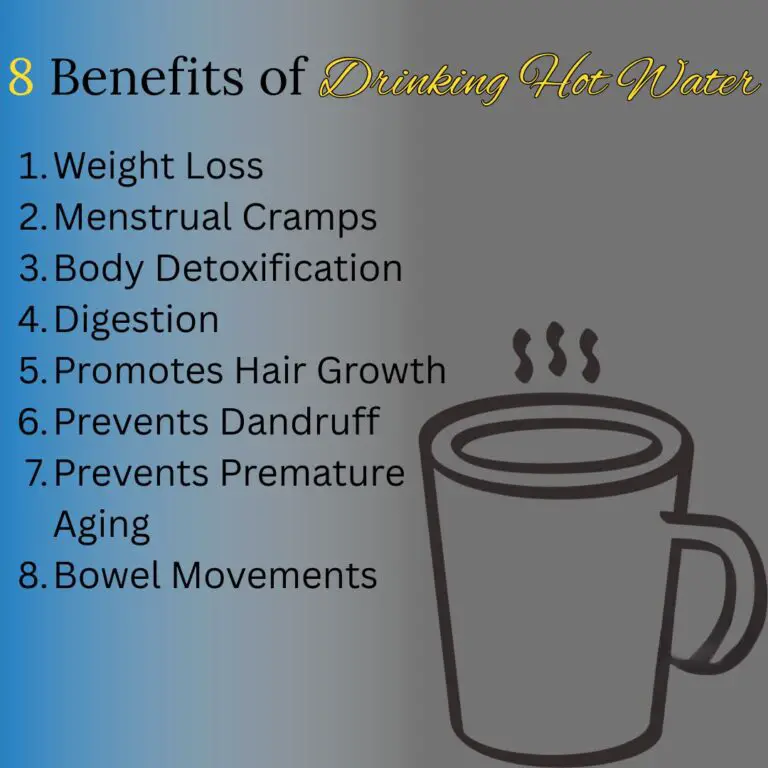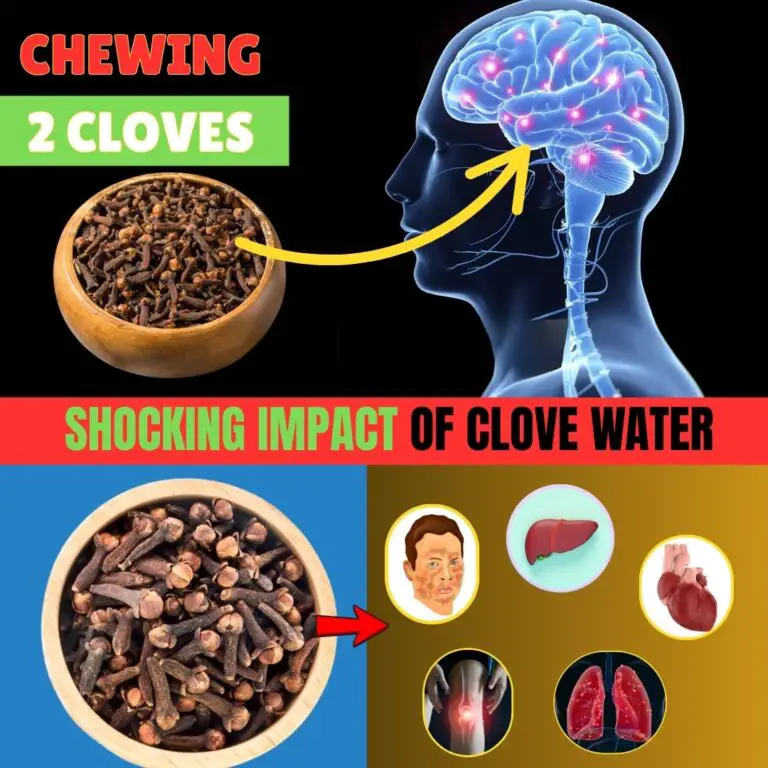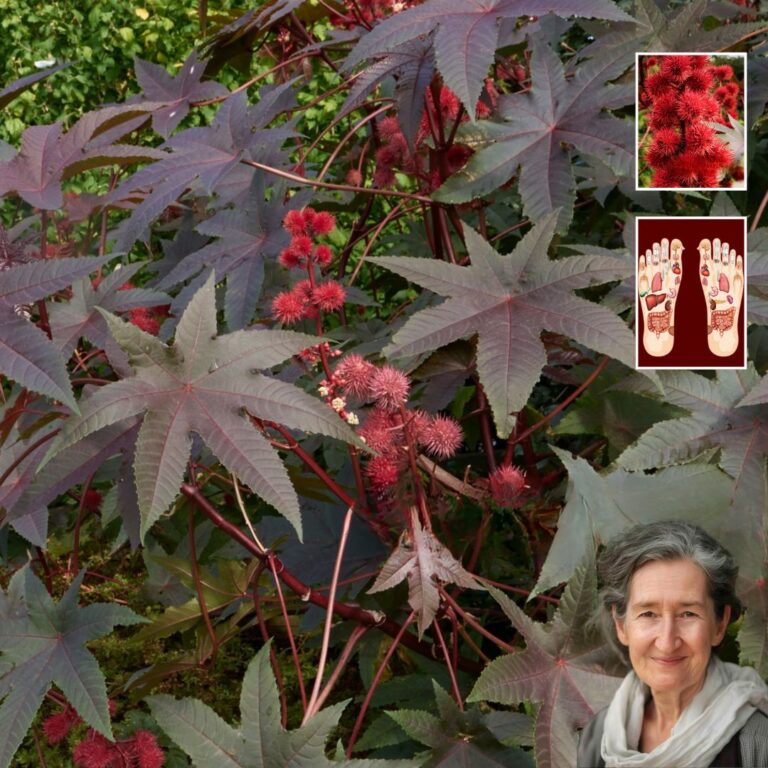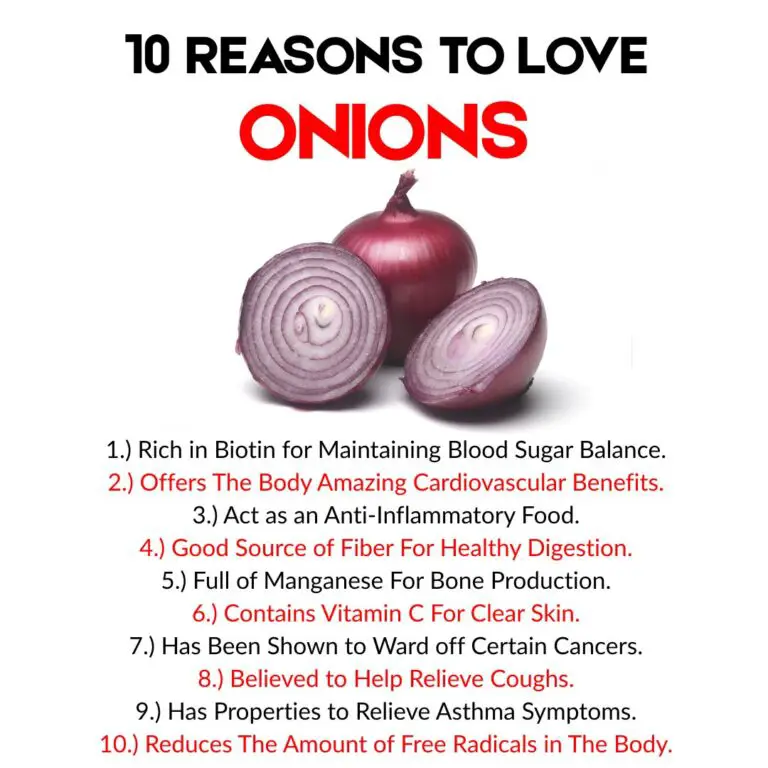9 Perennial Vegetables to Plant and Harvest for Decades: Your Ultimate Guide to Sustainable, Delicious Gardening
Growing your own food is one of the most rewarding experiences, but what if you could plant vegetables once and enjoy their harvest for years, even decades, to come? Enter perennial vegetables — nature’s gift for gardeners who want sustainability, longevity, and incredible flavors from their garden beds. Unlike annual vegetables that require replanting every season, perennials come back year after year, providing a reliable and often low-maintenance food source.
In this post, we dive deep into 9 perennial vegetables you can plant today and harvest for decades, sharing why they are worth your garden space, how to care for them, and what makes them uniquely delicious. Spoiler alert: Number 5, Walking Onions, stand out as a particularly tasty and fascinating choice you’ll want to try immediately.
Why You’ll Love Growing Perennial Vegetables
Imagine harvesting fresh vegetables without the hassle of replanting each spring. Perennial vegetables are not only convenient but also environmentally friendly, reducing soil disturbance and improving garden ecosystem health. They often develop deep root systems that enhance soil structure, conserve water, and resist pests and diseases better than annuals.
Beyond sustainability, these veggies bring unique flavors and textures to your kitchen. From the crisp snap of asparagus spears to the tangy zing of sorrel, perennial vegetables add diversity and excitement to your meals. Plus, many of these plants—like the Walking Onion—have fascinating growth habits that make gardening fun and engaging for both beginners and seasoned growers.
Whether you’re aiming to create a low-maintenance edible landscape, seeking to save money by planting once, or just craving fresh, homegrown produce with minimal effort, perennial vegetables are a game-changer.
Ingredients: What You’ll Need to Start Your Perennial Vegetable Garden
Since perennial vegetables grow for years, you only need to plant once — but the initial investment in quality plants or seeds is key.
- Asparagus crowns or seeds
- Rhubarb crowns or divisions
- Globe artichoke crowns or seedlings
- Jerusalem artichoke tubers
- Walking onion sets or bulbs
- Good King Henry seeds or divisions
- Sorrel seeds or plants
- Sea kale crowns or seedlings
- Lovage seeds or divisions
Additionally, you’ll need:
- Rich, well-draining soil amended with organic compost
- Mulch materials such as straw or shredded leaves
- Basic gardening tools (detailed below)
Necessary Tools for Planting and Maintaining Perennial Vegetables
Planting and caring for perennial vegetables requires some essential gardening tools to ensure success:
- Garden trowel and spade — for digging planting holes and soil preparation
- Garden fork — to loosen soil and incorporate compost
- Pruning shears — for harvesting and trimming plants
- Mulching material — straw, wood chips, or compost
- Watering can or hose with a gentle spray nozzle — to avoid disturbing roots and seedlings
- Gloves — to protect your hands while planting and harvesting
- Garden markers or labels — to identify your perennial plants
Ingredient Swaps and Additions: Customizing Your Perennial Vegetable Garden
One of the joys of perennial vegetables is their adaptability. Depending on your climate, soil, and taste preferences, you can mix and match these plants or substitute some with other perennials:
- Asparagus can be swapped with daylilies (edible shoots) in warmer zones for a unique twist.
- If you don’t like the tartness of sorrel, try French sorrel, which has a milder flavor.
- Instead of walking onions, you could experiment with multiplier onions like potato onions that multiply underground.
- Good King Henry is a great spinach substitute, but you can also try perennial spinach (Malabar spinach) in warmer climates.
- For a different flavor, replace lovage with perennial celery or parsley root.
Adding companion herbs like chives or mint near your perennial vegetables can enhance growth and deter pests naturally.
Step-by-Step Instructions to Plant and Care for Your Perennial Vegetables
1. Preparing Your Soil
Start by selecting a sunny to partially shaded spot with well-drained soil. Remove weeds and debris, then amend the soil with organic compost to ensure a nutrient-rich environment.
2. Planting Each Vegetable
- Asparagus: Plant crowns 12-18 inches apart in trenches 6-8 inches deep. Cover with soil gradually as they grow.
- Rhubarb: Space crowns 3-4 feet apart. Plant so the crown is just below soil level.
- Globe Artichoke: Plant crowns 3-4 feet apart in well-draining soil.
- Jerusalem Artichoke: Plant tubers 12-18 inches apart, about 4 inches deep.
- Walking Onions: Plant bulbs 4-6 inches apart, with tops just above soil.
- Good King Henry: Sow seeds or plant divisions 12-18 inches apart.
- Sorrel: Space plants about 12 inches apart.
- Sea Kale: Plant crowns 18-24 inches apart in full sun.
- Lovage: Space plants 18-24 inches apart in rich, moist soil.
3. Watering and Mulching
Keep the soil moist during the establishment phase, then reduce watering as plants mature. Apply mulch to conserve moisture and suppress weeds.
4. Maintenance and Harvesting
- Harvest asparagus spears in spring after 2-3 years of establishment.
- Cut rhubarb stalks in early spring, avoiding harvesting more than a third at a time.
- Harvest globe artichokes when buds are tight.
- Dig up Jerusalem artichokes tubers in fall or as needed.
- Snip walking onions when the bulbils mature on top.
- Harvest leaves from Good King Henry and sorrel throughout the growing season.
- Pick shoots and leaves from sea kale and lovage as needed.
Pro Tips for Success with Perennial Vegetables
- Be patient with establishment: Most perennials take 2-3 years to produce a full harvest.
- Rotate beds if possible: To prevent disease buildup, rotate annual crops nearby but keep perennials in their spots.
- Protect young plants: Use row covers or netting to prevent pests in early growth stages.
- Divide and transplant: Every few years, divide crowded plants like rhubarb and lovage to keep them healthy.
- Encourage pollinators: Flowers from artichokes and Jerusalem artichokes attract beneficial insects.
Serving Suggestions for Your Perennial Harvest
- Asparagus: Grill with olive oil, garlic, and lemon zest for a spring appetizer.
- Rhubarb: Use in compotes, pies, or tangy sauces paired with pork.
- Globe Artichokes: Steam and serve with garlic butter or aioli.
- Jerusalem Artichokes: Roast like potatoes or puree into creamy soups.
- Walking Onions: Use raw in salads or cooked in stir-fries for a mild onion flavor.
- Good King Henry and Sorrel: Sauté as you would spinach or add to omelets.
- Sea Kale: Steam the shoots and buds, then dress with vinaigrette.
- Lovage: Chop finely for soups, stocks, and salads for a celery-like kick.
Storing and Reheating Perennial Vegetables
- Asparagus: Store fresh in the fridge wrapped in a damp cloth; best consumed within 3 days.
- Rhubarb: Refrigerate unwashed stalks in plastic for up to a week; freeze chopped for longer storage.
- Artichokes: Keep whole heads in the fridge for up to 5 days.
- Jerusalem Artichokes: Store tubers in a cool, dark, humid place for several weeks.
- Walking Onions: Can be stored like regular onions or replanted.
- Greens (Good King Henry, Sorrel, Sea Kale): Store in perforated bags in the fridge; use within 3-4 days.
- Lovage: Store fresh in water like cut flowers or freeze chopped.
Reheat greens gently by steaming or sautéing to preserve flavor and nutrients.
Nutritional Information Snapshot
- Asparagus: Rich in vitamins A, C, E, K, and folate; high in fiber and antioxidants.
- Rhubarb: Low calorie, high in fiber and vitamin K.
- Artichokes: Excellent source of dietary fiber, vitamin C, and magnesium.
- Jerusalem Artichokes: High in inulin, beneficial for gut health.
- Walking Onions: Contains vitamins A and C, with antibacterial properties.
- Good King Henry: High in iron, calcium, and vitamins A and C.
- Sorrel: High in vitamin C and antioxidants.
- Sea Kale: Rich in vitamins A, C, and calcium.
- Lovage: Contains vitamin C, calcium, and iron.
FAQs About Perennial Vegetables
Q1: How long does it take for perennial vegetables to start producing?
Most perennial vegetables take 2-3 years to establish before you get a full harvest, though some like Jerusalem artichokes produce tubers in the first year.
Q2: Can I grow perennial vegetables in containers?
Yes, many perennials like walking onions and rhubarb can grow well in large containers if given enough space and nutrients.
Q3: Are perennial vegetables low maintenance?
Generally, yes. After initial establishment, they require less frequent planting and often have fewer pest issues.
Q4: How do I propagate perennial vegetables?
Propagation methods vary: asparagus and rhubarb by crowns, walking onions by bulbils, and sorrel by seed or division.
Q5: Can I harvest perennial vegetables all year round?
Some can be harvested throughout the growing season (e.g., lovage, sorrel), while others have specific harvest windows like asparagus in spring.
Conclusion
Perennial vegetables are a gardener’s dream—offering sustainable, flavorful, and low-maintenance crops that keep giving year after year. Whether you’re drawn to the quirky “walking” habit of the Egyptian onion, the classic elegance of asparagus, or the tangy freshness of sorrel, these nine vegetables provide variety and longevity in your garden and on your plate. Start planting today and enjoy a decade or more of homegrown goodness!
Ready to dig deeper into perennial gardening or explore seasonal recipes? There’s a whole world of edible gardening waiting for you.

